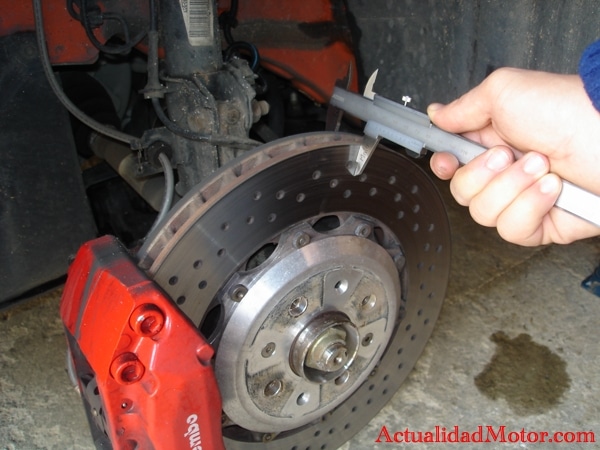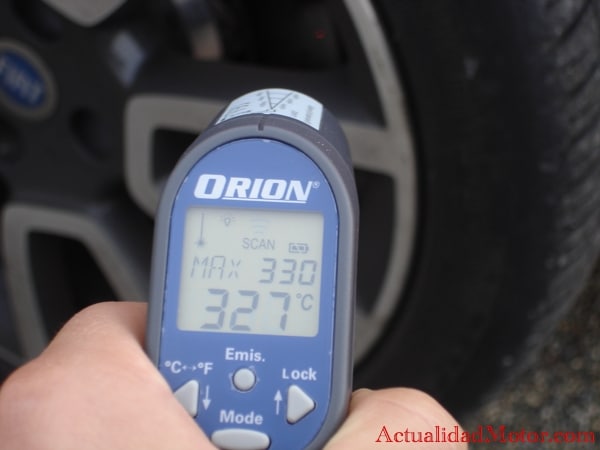- Brembo brakes have lived with us for 10.000 km and it's time to analyze its status. In all this time they have been subjected to all kinds of terms and conditions of useat normal city driving and road to heavy track use, to port drops at full load to force them to the maximum.
The front discs are still in perfect condition, although the pads have already degraded quite a bit.
When we substitute the original brake kit of the car for some of high performance Brembo GT It was already clear that we were going to obtain a series of advantages: more powerful braking, Better mordant, heating resistance y pedal touch. Now, how long do they last? It is not pleasant to spend extra money to improve the car's brakes if the investment is later wears out quickly.
The brakes cool well and are oversized…it's hard to get to the fadding
In our case, we have traveled a little over 9.500 km, approximately 3.500 of which are by highway, 2.000 by national roads (wide and relatively straight), 3.000 km by mountain road (close curves and descents) and 1.000 km per city. Too a circuited on two occasions (although one of them with little requirement for the brakes)
We proceed to remove the rims and measure the wear; the figures show the following:
- front disc wear less than 0,2 mm (approximately 10% wear)
- front pad wear 8,54 mm (57% wear)
- rear disc wear a little more than 0,3 mm (15% wear)
- rear pad wear 4,6mm (27% wear)
Analyzing the figures and taking into account the temperatures measured during the tests, we see that the front brakes bear much of the braking work. The useful life of the team Brembo, assuming identical wear and tear to what it has had so far is:
- front discs 100.000 km
- front pads 17.500 km
- rear discs 66.000 km
- rear pads 37.000 km
All the front brake pads They wear out much faster than discs (logical). considering the brake disc price and tablets It's better this way... I prefer to change the pads several times than to break everything at the same time 🙂
The funniest part of the test we lived in the Kotarr circuit, recording this video
It is also observed that the rear brakes they wear unusually. Maybe we should have chosen a softer compound for rear pads. It's also because the front pads take a lot more brake pressure than the rear ones, due to the use of metal hoses and calipers with larger diameter pistons. Conventional hoses “absorb” part of the pressure exerted on the pedal by deforming its walls, while metal hoses better transmit said pressure on the caliper pistons.
Soon we will recheck the wear: if it is still much larger at the front than at the rear, we will install metal hoses on the rear calipers, to see how the feel and braking changes. We may change the rear pads for others, they may be harder than expected.
Continued ...

